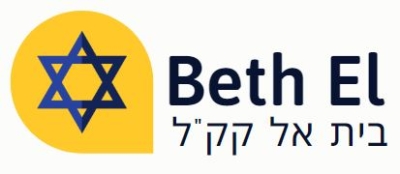April happenings and a new way to donate
Chaverim/Friends:
What an exciting month coming up. But first, a weekly don’t miss: our Friday night services are tonight at 7pm. Please join us and end your week on a high note.
New Way to Donate
Check out Beth El’s New Donation Page on our Website
http://bethelaustin.wpengine.com/donate/
Our web page is an easy and secure way to support our congregation.
Mitzvah Day April 6th
Please join the Jewish community in volunteering at the Austin Mitzvah Day, April 6th. For more information please see www.shalomaustin.org/mitzvahday. Please also bring in items for the collection drive: See the list of needed items. Help support our awesome Jewish community.
Austin Jewish Film Festival – starts this weekend. Please see http://austinjff.org for a full listing of films. Beth El is a proud sponsor of the AJFF!
Second night Seder at Beth El: Tuesday April 15th 6.45 pm
Join us for this Beth El annual tradition. Please be sure to RSVP for the second night seder at Beth El as it is always popular and super fun. We start at 6:45 pm, have the whole family involved in the Hagaddah reading and finish with a delicious festive meal, cooked at Beth El. The event is free, but we ask for donations to help cover costs as well as help with bringing kosher for Passover goods.
Frankie and Jakob’s Bnei mitzvah:
The Union brothers, Frankie and Jakob are celebrating their Bar mitzvahs the weekend of Friday April 25 and Saturday April 26. Please join the Union family and our whole congregation in celebrating with them. Friday night services will start at 6:30 pm with a shabat dinner at Beth El to follow. Saturday morning services will start at 9am, with a kidush luncheon at the Dell JCC immediately following. A hearty mazal tov to our awesome Frankie and Jakob and their entire family!
CANTOR BEN-MOSHE’S WEEKLY MESSAGE
This Shabbat, which falls just before the New Month of Nisan, is known on the Jewish calendar as “Shabbat Hahodesh”. In addition to the regular parshah of Tazri’a, we read the section of the Book of Exodus in which the People of Israel are commanded to create a calendar beginning with the month of Aviv, which we now call by the Babylonian name Nisan. The creation of a calendar is the first act of the independent People of Israel-their time (and ours) would no longer be determined by the Egyptians. Significantly, the first commandment given to our ancestors after the Exodus concerned Shabbat, the making of sacred time. In the words of the Friday night kiddush, we call the Shabbat a “zecher litziat Mitzrayim”, “a remembrance of the Exodus from Egypt”. When we left Egypt, our time became our own. It is now up to us to make our time holy. Shabbat Shalom
RABBI PETER TARLOW of Texas A&M Center for Crypto Judaism:
Due to time constraints this week we study a double Torah portion. Called Tazriah and Metzorah, these two sections are some of the Torah’s most difficult parts to comprehend. In fact there is little doubt that this week’s and next week’s parashah are ones that many people would love to skip.
We find the first section, Tazriah, in Leviticus 12:1-13; 59, and the second weekly section, Metzorah, in 14:1-15:33. These sections deal with the issue of skin diseases, providing a full list of symptoms. The Torah reading discuss chronic ailments, purification rituals, discharges from sexual organs, and special rituals for Yom Kippur. The text describes these bodily ailments in often the most minute detail. Often modern readers ask if the reading of these sections is really necessary.
The Hebrew in both sections is difficult and often illusive. Together the two sections go into a great detail concerning the “sin-offerings”and about a skin disease that may have been a form of leprosy.
These are not easy chapters either then to read or understand. Biblical commentators have often seen these chapters as the Bible’s attempt to teach good medical practices, the need to stop infection and the realization that we are constantly faced with new forms of medical challenges. Yet, one wonders if the text is really nothing more than a long treatise on medical habits?
If we go beyond the text’s literal meaning, can we find deeper meanings? Are these ritual chapters teaching us that to be healthy one must do more than merely live a “clean” lifestyle? Is it telling us that health has as much to do with what we put into our bodies and also into our souls?
Is this mind-soul continuum manifested by the Midrash (rabbinic parables) that connect the word “Metzira/leprosy with the word “motzira/tale baring, idol gossip”? In other words a healthy life style is more than what we eat, it is also how we think, act, and say. Is the text then teaching us that too much worry, or self-concern (pity) gets us no where? Can we be so ego-centered that we end up transforming everything small hurt into a problem as a major issue? Do we begin to suffer from a psoriasis of the mind resulting in self absorption?
What is true of the individual may also be true of whole societies. The continuous teaching of anti-Semitism in many Arab lands, the inherent racism and anti-Semitism of Europe are examples of societies that have taught hate and are today filled with hate. How often to Europeans try to deal with 2000 years of anti-Semitism by projecting their failures onto Israel?
The Torah’s lesson is that both physical and mental diseases are all too often connected by a thread of anger that breaks society’s social fabric. It is for this reason that the Torah admonishes us to seek purification not only of the body but also of the soul? How tragic that so many in the so-called liberal lands have failed to understand the meaning of these portions. What do you think?
